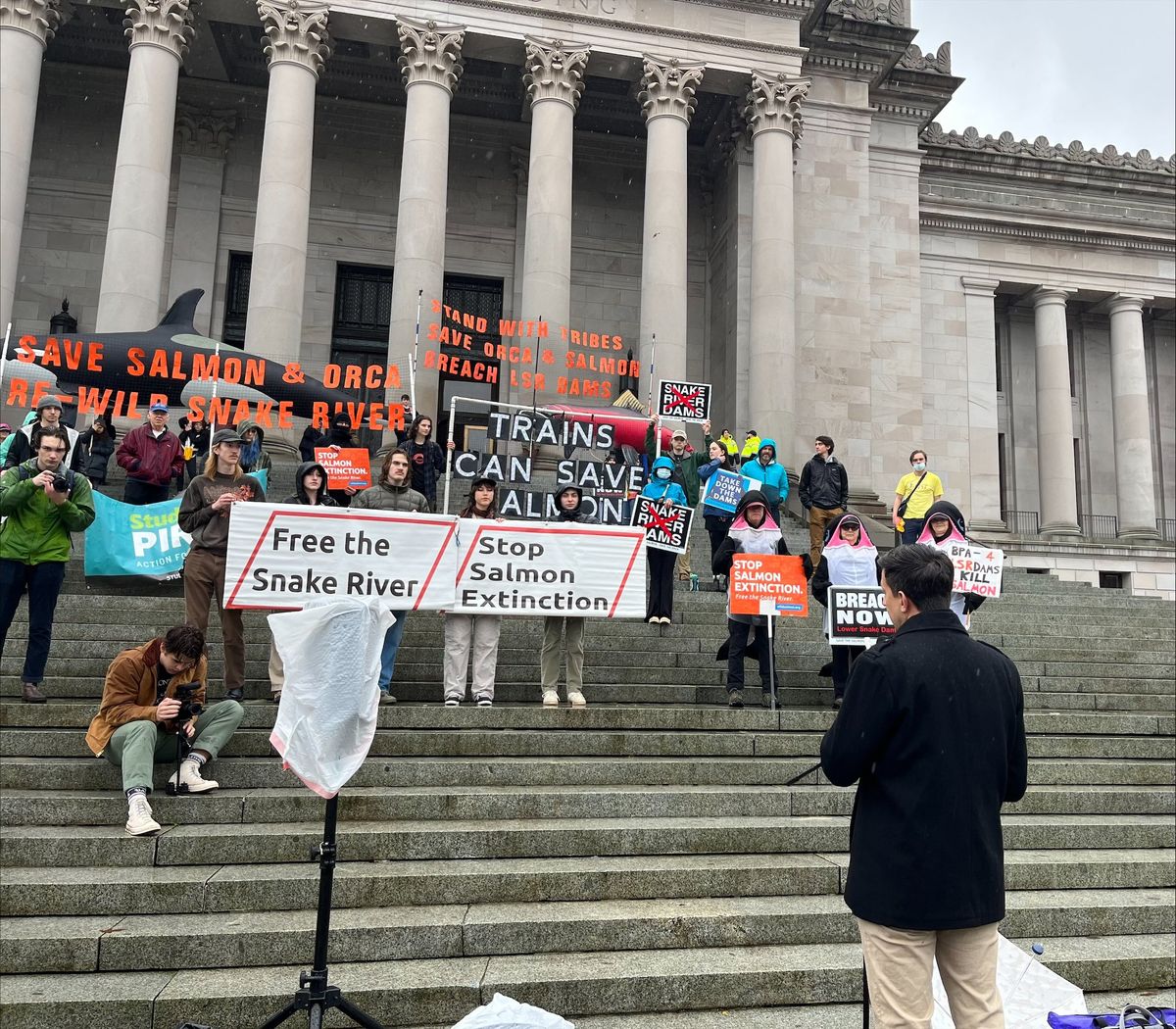Rally in Olympia calls for legislative action to make Lower Snake River dam breaching a possibility

OLYMPIA – Olympia residents may have noticed an unusual sight as they went about their Friday: a 24-foot, life-size inflatable orca carried by demonstrators who support breaching the lower Snake River dams.
Demonstrators hoped to catch the attention of lawmakers and raise awareness of the dwindling population of the Southern resident orca in Puget Sound, which stands at 74 as of August 2021.
The Washington Youth Ocean and River Conservation Alliance and other activist groups held the rally and called for preserving the endangered orca and their main food source, chinook salmon, also an endangered species. Activists marched from downtown Olympia up to the Capitol steps, where they were greeted by Rep. Alex Ramel, D-Bellingham.
“Oftentimes it’ll feel like, as a high school student, you’re not heard and you’re out here in the streets, but nothing is actually happening,” said 16-year-old Maanit Goel, director of WYORCA. “It’s great here in Washington that some of our representatives are so receptive to the work that we’re doing.”
More than 100 people marched through the rain, carrying light-up signs and posters.
“It feels counterintuitive at times that removing four hydroelectric dams is the path we must take to recover Northwest salmon and orca,” Goel said in his speech. “It has become evident that the energy these dams produce cannot be considered clean. How can energy at the cost of a keystone species be clean?”
While the decision to breach the dams will ultimately have to come from Congress, Washington State legislators could implement legislation to make it feasible. Breaching the dams is not possible without first establishing alternatives to the benefits the dams provide.
These benefits include hydroelectric power, irrigation, recreation and navigation by barge. Farmers rely on the low costs of transportation of their crops via barges on the Snake and Columbia River systems. Sixty percent of Washington’s wheat is barged on these rivers, where it is eventually received globally, according to Michelle Hennings, executive director for the Washington Association of Wheat Growers.
“Transportation costs would go through the roof if we lost our barging system,” Hennings said. “With everything else that’s expensive for them to operate and to feed the world, it would be detrimental to the farmer having another cost that would increase.”
In a benefit replacement report published last August, Gov. Jay Inslee and Sen. Patty Murray explored these possible alternatives, saying mitigating the benefits of the dams is paramount in moving forward with the possibility of removal. In their recommendations following the report, Inslee and Murray underscored the need for rapid and comprehensive action.
In the 2022 session, the Legislature, as a request of Inslee, budgeted $375,000 to evaluate the alternatives to the benefits the dams provide. In 2019, Inslee allocated $750,000 to study the possible effects of dam breaching. During this session, Inslee intends to further explore energy alternatives.
The demonstrators at Friday’s rally called upon the Legislature to fund more studies and pass legislation to improve Washington’s infrastructure, specifically in railways and clean energy. They hope this legislation will bring Washington closer to their final goal of breaching the dams.
Inslee and Murray’s report estimates dam breaching to cost $10 billion to $31 billion.